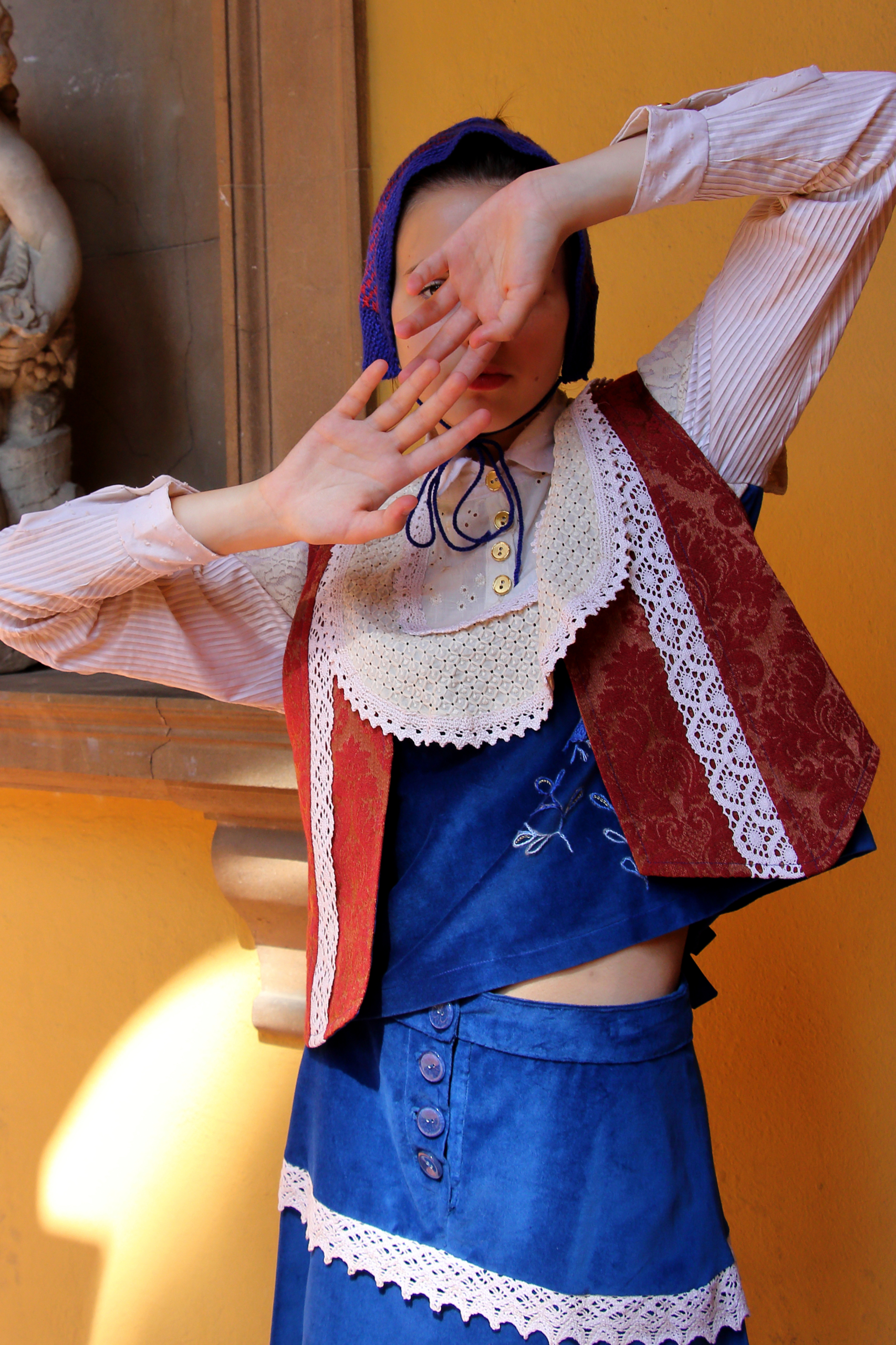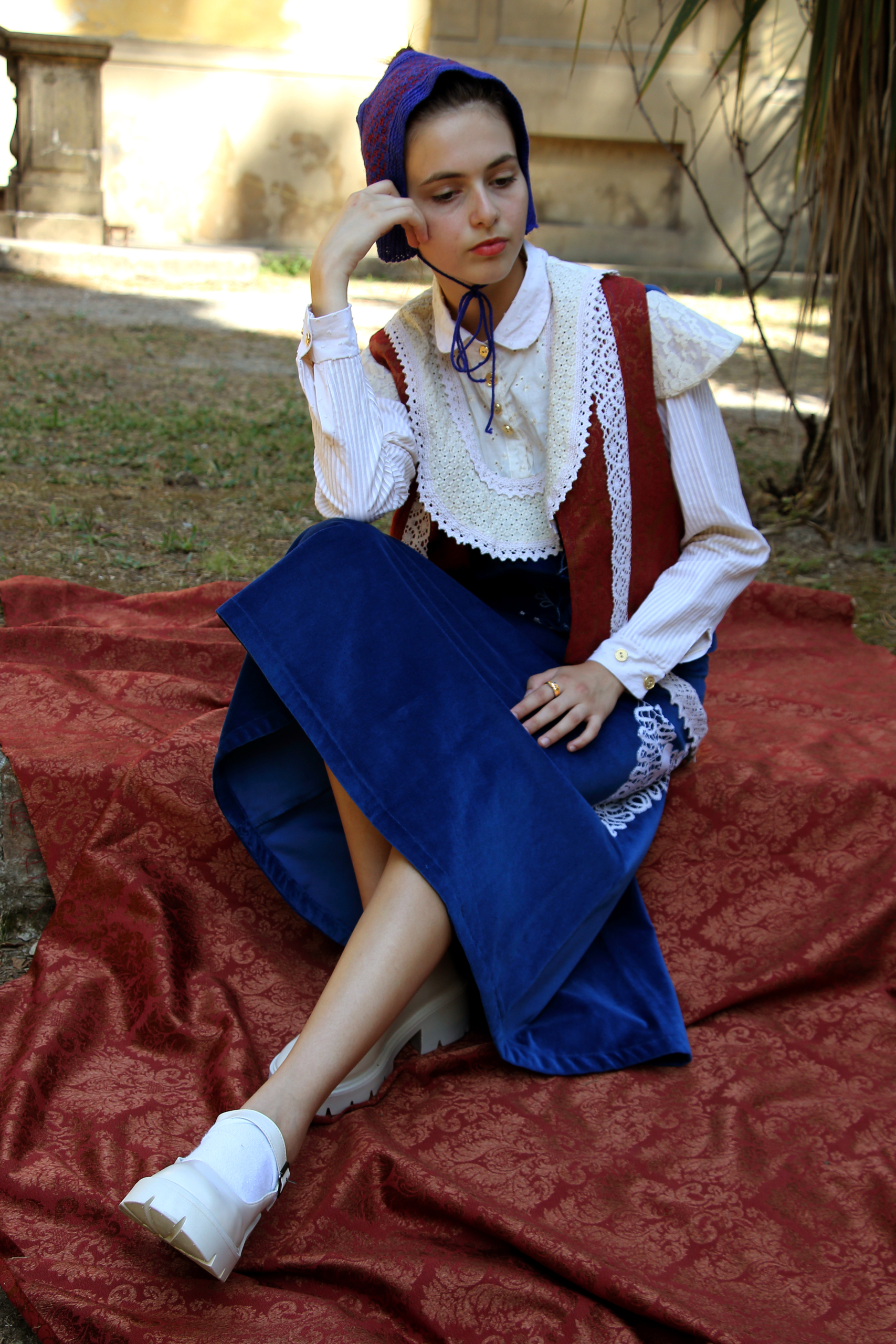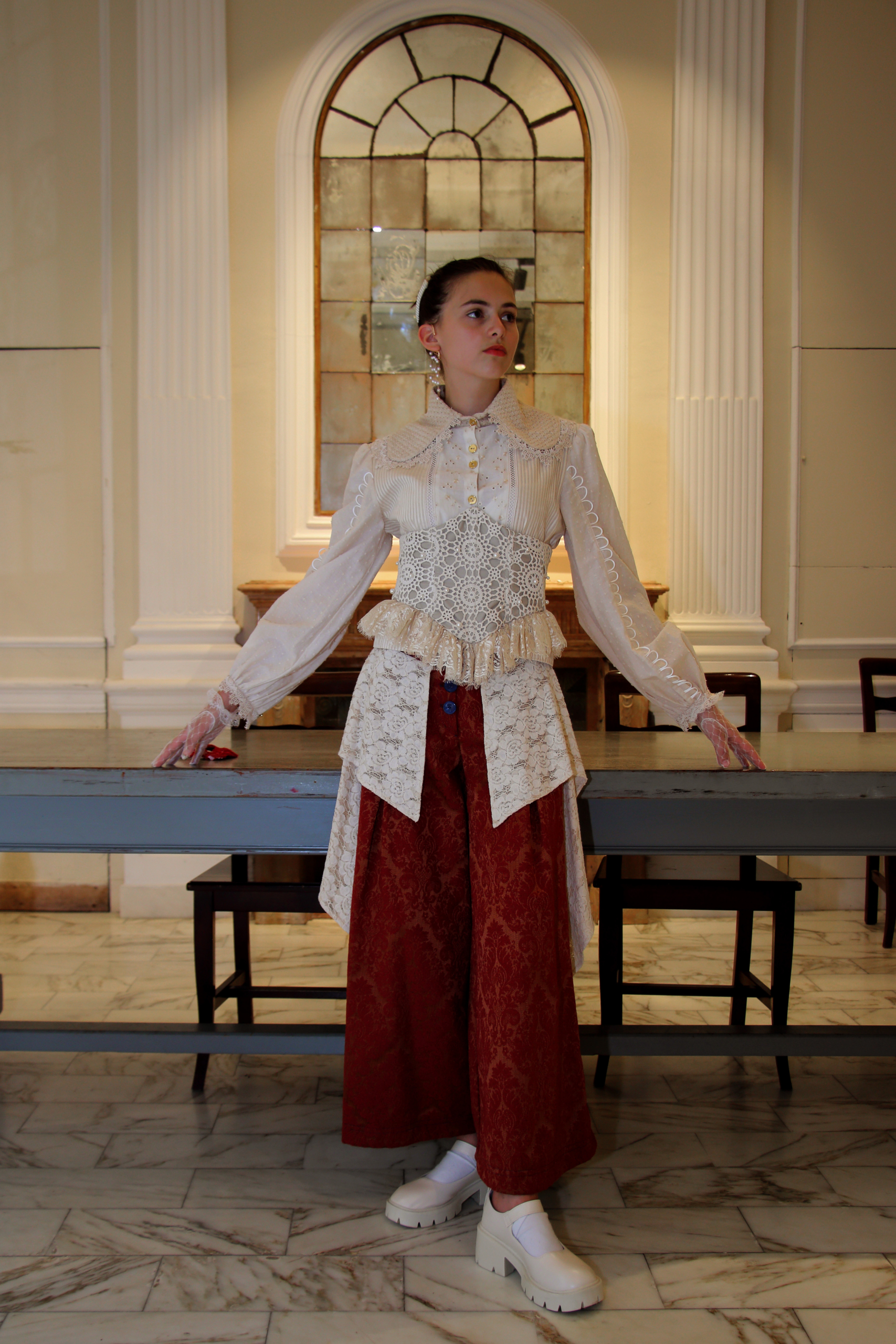by Cosimo Baldi
Alessia Fontana Waves the past into the future
2022, in the quiet corners of Tuscany, where the air carries the whispers of ancient looms and the streets recall the footsteps of artisans long gone, a young voice is emerging from the vast ocean of the fashion industry, drawing from the centuries-old textile history of central Italy to find the perfect materials for her graduation collection, which would later be showcased in January 2023.
Alessia Fontana, among the promising designers selected to participate in Fashion Graduate 2022, created a collection that is as much an exploration of history as it is a celebration of art. Her collection, marking the culmination of her studies at the Modartech Institute in Pontedera, aptly titled “Echec et Mat,” is not merely a nod to the fashion of the past; it is a masterful confluence of past and present, a sartorial homage to the Dutch Golden Age through the eyes of an artist who believes in the omnipresence of art and fashion.
During her academic years, Fontana sought to understand her own style, not by looking outward, but by looking inward—into the rich tapestry of art and the complex patterns of costume history. For Fontana, art and fashion are not separate realms; they are inextricably intertwined, each continually urging the other to draw inspiration, to evolve, to transcend. This belief underpins her entire collection, a conviction that art, in all its forms, is life itself.
Fontana’s style essence is rooted in the pastoral and romantic aesthetic of the Cottagecore movement, but it extends far beyond the rustic charm of that world. Her inspirations cross seas to northern lands, particularly the Netherlands, where the classic designs of the 17th century resonate with timeless elegance. But it is in the works of artists Rembrandt and Vermeer that the designer found her muses. “The Lacemaker” (a painting by Vermeer from 1669/70), a work imbued with the quiet dignity of feminine craftsmanship, became the cornerstone of Fontana’s vision. In the painting, she saw not only a figure absorbed in her delicate art but a reflection of her own creative journey, one that sought to resurrect the dying arts of embroidery, crochet, and tailoring, and breathe new life into them through the lens of modern fashion.
Fontana’s collection, “Echec et Mat,” is a tribute to the art of the Dutch Baroque period, often referred to as the Golden Age, a time when the Netherlands reached the pinnacle of their cultural and artistic achievements. The title itself, which translates to “Checkmate” in French, carries historical resonance, alluding to the period when the Netherlands claimed their independence from religious and territorial influences, marking a time of newfound freedom and artistic flourishing. This historical context provides a rich backdrop for the collection, which is imbued with the spirit of rebellion and the pursuit of artistic expression.
The pieces in “Echec et Mat” are a visual symphony, each meticulously crafted to reflect the opulence and intricate workmanship of 17th-century Dutch fashion. The collection is a study in contrasts: luxurious yet restrained, nostalgic yet forward-looking. The use of velvets, brocades, and tea-aged cottons to achieve a patina of history speaks to Fontana’s dedication to authenticity and her reverence for the past. Intricate lace and embroidery, carefully crafted by local artisans, adorn the garments, each stitch a testament to the craftsmanship that is disappearing in the age of mass production.
The color palette of the collection draws directly from Vermeer’s works, where light and color dance in delicate balance. Deep, saturated blues reminiscent of Vermeer’s “Girl with a Pearl Earring,” earthy reds evoking the richness of Rembrandt’s portraits, and the soft, muted tones of lace and cotton come together to create a visual narrative that is both striking and serene. The interplay of these colors is not merely an aesthetic choice; it is a deliberate attempt to capture the essence of light and shadow that defines the entire collection.
Fontana’s designs are more than just clothes; they are stories woven into fabric. The silhouettes, inspired by the structured yet fluid forms of the 1600s, are reinterpreted for the modern woman. The jackets, with their fitted bodices and flared skirts, echo the elegance of the Dutch court, while the voluminous sleeves and ruffled collars add a touch of theatricality. The use of crochet and lace, both integral to the collection, serves as a reminder of the artisanal skills that once defined women’s work—skills that risk being lost in the era of mass production.
In creating this collection, Fontana was deeply influenced by her mother, a constant source of inspiration and guidance. Her mother’s love for sewing and her commitment to preserving traditional arts reminded Fontana of the importance of keeping these arts alive. The crochet flowers that bloom on the garments are a tribute to this maternal influence, a nod to the generations of women who have passed down these skills, ensuring they are not forgotten.
The title of the collection, “Echec et Mat,” is not just a reference to the historical checkmate of the Netherlands; it is a metaphor for Fontana’s triumph in uniting past and present, art and fashion, tradition and innovation. It is a statement that in the game of creativity, she has made her move, and this move will resonate in the world of fashion.
As the models walk down the runway, draped in the rich fabrics and intricate details of Fontana’s designs, one cannot help but be transported to another time, another place. Yet these garments are not relics of the past; they are contemporary, relevant, and entirely wearable. They are a reminder that fashion is not just what we wear; it is the story we tell, the heritage we carry, and the art we create.
In a world where fast fashion dominates and traditional crafts risk disappearing, Fontana’s “Echec et Mat” stands as a beacon of hope. It is a celebration of the slow, deliberate process of creation, of the beauty that lies in imperfection, and of the enduring power of art. It is an invitation to remember the past, to honor the skills of those who came before, and to ensure that these arts are not lost to the sands of time.
Alessia Fontana has not just created a collection; she has created a legacy. “Echec et Mat” is a reminder that fashion, like art, is timeless. It is a celebration of life in all its forms—life that is art, and art that is life. And as we look to the future, we can take comfort in knowing that there are still those committed to preserving the beauty of the past while pushing the boundaries of what fashion can be. In the hands of Alessia Fontana, the future of fashion looks bright, full of promises of innovation, creativity, and a deep respect for the art that came before.
Ultimately, “Echec et Mat” is more than just a collection; it is a testament to the power of art and fashion to transcend time, to tell stories that resonate through the ages, and to remind us of the beauty that lies in the details. And in a world that often moves too fast, it is a reminder to slow down, to appreciate craftsmanship, and to love the art of creation. With this collection, Alessia Fontana has left a mark that will not be easily forgotten.




